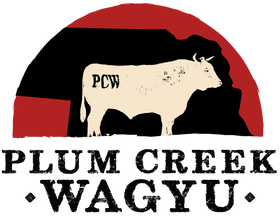The Legacy of Wagyu: How a Japanese Tradition Became a Global Phenomenon
Wagyu beef, often hailed as the finest and most luxurious meat in the world, has a long and rich history that dates back over 100 years. Originally from Japan, this highly-prized beef has grown from a regional delicacy to a global phenomenon, transforming how the world views luxury dining. But what is it that makes Wagyu so special, and how did it become synonymous with quality and indulgence around the globe?
The Origins of Wagyu Beef in Japan
The word "Wagyu" itself translates to "Japanese cattle," and it refers to several breeds of cattle native to Japan, with the most famous being the Japanese Black, known for its exceptional marbling. The history of Wagyu dates back to the 2nd century when cattle were used primarily for agricultural purposes, pulling plows and carts. It wasn’t until the 19th century that Japanese farmers began to focus on breeding cattle for their meat, with the goal of creating a tender, flavorful beef that would be distinctively Japanese.
Over the centuries, Wagyu cattle were raised in the remote, mountainous regions of Japan, where farmers employed specific care techniques. The cattle were fed a diet rich in rice straw, corn, and barley, and were often given massages or even beer to encourage relaxation and increase marbling. This meticulous care resulted in beef with a unique texture, full of tender marbling that melts into a rich, buttery flavor when cooked.
Wagyu Beef in Japan: A Cultural Tradition
In Japan, Wagyu is more than just a luxury product; it’s a cultural experience. Wagyu beef is often enjoyed at high-end restaurants, where the focus is on the art of preparation and presentation. The Japanese take great pride in the quality of their beef, and Wagyu has become a symbol of both craftsmanship and luxury. It’s often served in special ceremonies, holiday meals, and prestigious events, marking important milestones in life.
The distinct marbling in Wagyu beef, often referred to as "sashi," is a product of the genetic traits of Wagyu cattle, which have been carefully bred for generations. This marbling gives Wagyu its signature tenderness, which makes each bite melt in your mouth. Japan’s dedication to preserving the traditional methods of raising Wagyu ensures that each cut of beef reflects the care and skill passed down through generations.
Wagyu's Global Reach: From Japan to the World
In the late 20th century, the desire for Wagyu beef began to reach beyond Japan's borders. As global travel increased and interest in gourmet dining rose, chefs and food enthusiasts began to recognize the unmatched quality of Wagyu beef. American, Australian, and even European farmers started to breed their own versions of Wagyu cattle, leading to the rise of "American Wagyu" and "Australian Wagyu." While these versions may differ slightly in flavor and texture due to different feeding practices and climates, they still carry the legacy of Japan’s beef culture.
The rise of international markets for Wagyu beef has made it accessible to more consumers, but it also has driven up demand for high-quality Japanese Wagyu. Today, only a small percentage of true Japanese Wagyu is exported, with certain cuts reaching astronomical prices. In Japan, certain regions, such as Kobe, are known for their exceptional Wagyu, which continues to be considered the gold standard for beef lovers around the world.
The Enduring Appeal of Wagyu Beef
Wagyu beef is more than just meat—it’s a symbol of tradition, luxury, and exceptional craftsmanship. From the careful breeding of cattle to the meticulous feeding and care, every step in the production of Wagyu beef is rooted in a deep respect for the animals and the culinary heritage of Japan. As it continues to captivate the global palate, Wagyu beef remains an extraordinary testament to the artistry and dedication that goes into producing the finest beef in the world.
Related Posts
How We Select and Age Our Wagyu Beef for Optimal Flavor
Learn about the process of selecting and aging Wagyu beef at Plum Creek Wagyu. Discover the differences between dry-aging and wet-aging and how each method enhances the flavor and tenderness of our premium Wagyu cuts.
How We Select and Age Our Wagyu Beef for Optimal Flavor
Learn about the process of selecting and aging Wagyu beef at Plum Creek Wagyu. Discover the differences between dry-aging and wet-aging and how each method enhances the flavor and tenderness of our premium Wagyu cuts.
Sustainable Ranching at Plum Creek Wagyu: Our Eco-Friendly Practices
Discover Plum Creek Wagyu’s commitment to sustainability and eco-friendly ranching practices. Learn about our efforts in land stewardship, water conservation, and reducing our carbon footprint to produce premium Wagyu beef responsibly.
Behind-the-Scenes at Plum Creek Wagyu: From Pasture to Plate
Discover the life cycle of a Plum Creek Wagyu cow, from birth to plate. Learn about the care, feeding, and stress-free environment that contributes to the exceptional quality of our Wagyu beef.
Wagyu Beef vs. Kobe Beef: What’s the Difference?
Curious about the difference between Wagyu and Kobe beef? Learn how these two premium beef types differ in terms of origin, quality, and flavor, and discover why Kobe beef is considered the gold standard of luxury dining.
The Science Behind Wagyu Marbling: Why It’s So Special
What makes Wagyu beef so incredibly tender and flavorful? The secret lies in its marbling. Discover the science behind Wagyu’s signature fat distribution and why it creates the ultimate steak experience.








